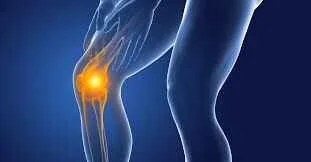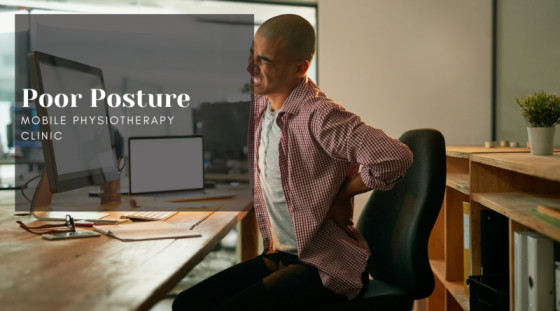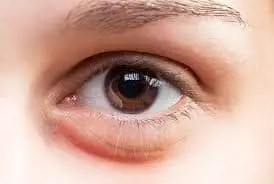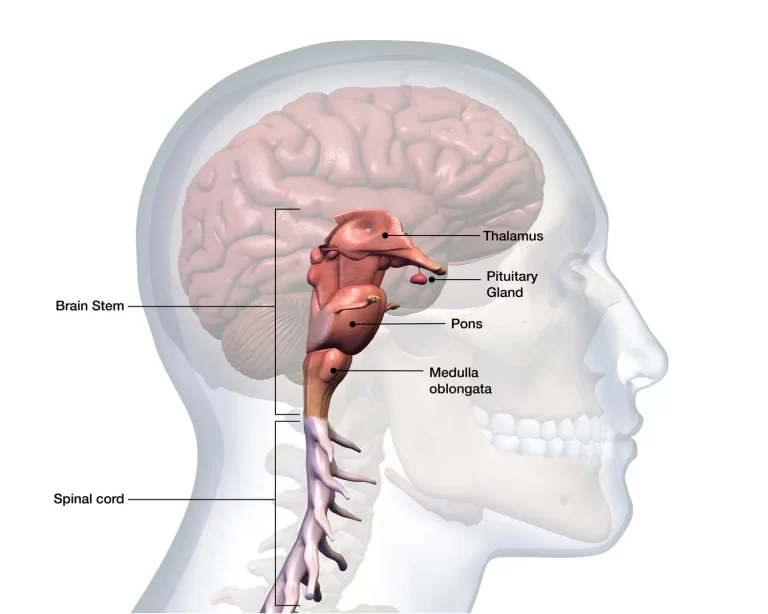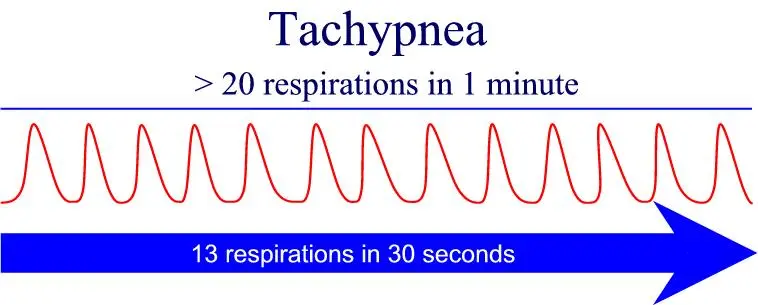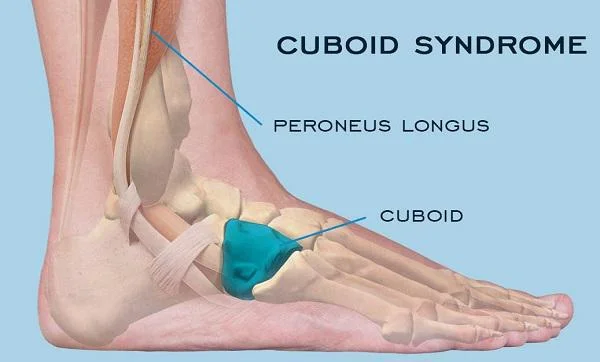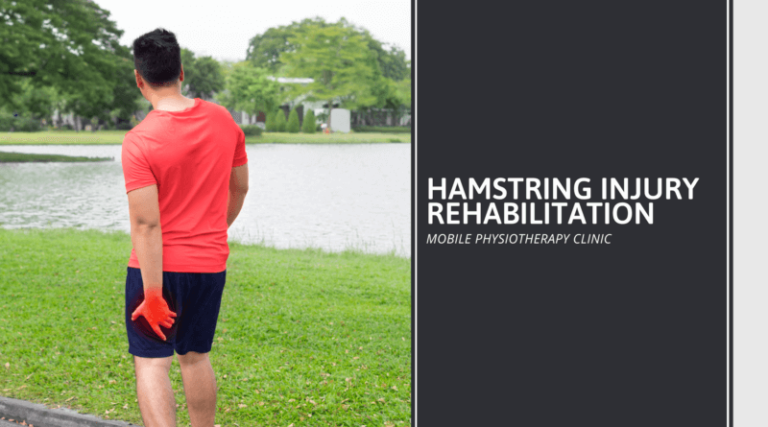Fluids on the Knee
An accumulation of fluid around and inside the knee joint can result in water on the knee, which hurts and swells. Knee effusion, often called fluid on the knee, is a condition that can happen to any joint that has been damaged by an injury or underlying illness like arthritis.
Sometimes, doctors will refer to swelling in the knees as “knee effusion”. Some people might call it “water on the knee.” An illness, prolonged overuse, or trauma can all cause knee swelling.
Introduction
An injury or medical condition like arthritis may cause fluid to accumulate on the knee. Physical therapy, surgery, and medication are possible forms of treatment, depending on the underlying cause.
Each of our joints contains a tiny quantity of fluid. Our unique joint lubrication system reduces friction and aids in the promotion of smooth joint rotation.
An excessive amount of fluid buildup around a joint results in joint effusion. It’s frequently referred to as “water on the knee” or swollen knee when it occurs in the knee. It might be the outcome of a disease, an injury, or an infection.
When extra fluid accumulates in or around your knee joint, it can cause a swollen knee. This problem may be referred to by medical professionals as an effusion in your knee joint.
Knee swelling can be brought on by trauma, overuse injuries, or underlying diseases or disorders. To determine the reason behind the swelling, your healthcare professional may need to examine a sample of the fluid to check for diseases, infections, or injuries.
Partially draining the fluid could assist in easing the discomfort and stiffness brought on by the edema. The first step in treating a condition is identifying its root cause.
The accumulation of extra fluid in or around the knee joint results in knee effusion, sometimes known as “water on the knee.” Arthritis and damage to the cartilage and ligaments of the knee are common reasons.
Normal joints contain a small quantity of fluid. But occasionally, too much fluid can accumulate and cause the knee to swell and puff up. Examples of these conditions include osteoarthritis and rheumatoid arthritis.
Your knees will have some fluid when they’re in good health. That liquid facilitates painless, seamless movement of your knee joint by lubricating it. However, occasionally, extra fluid can build up in and around your knee joint. In addition to feeling uncomfortable, your knee may appear bigger, puffier, or swollen. It is apparent to you that something is off.
Knee flexibility and function may be restricted by swelling in the knee joint. For instance, a swollen knee may be difficult for a person to bend or straighten fully, and when the leg is at rest, the joint may naturally bend between 15 and 25 degrees. In addition, the swollen knee may hurt, be red, or be challenging to bear weight on.
A swollen knee may be treated medically or at home with the R.I.C.E. formula (rest, ice, compression, and elevation) depending on the underlying condition. Diagnoses made by doctors are accurate.
More information regarding the causes, treatments, and preventative measures for fluid on the knee was provided by Neal McKimpson, DO, a family and sports medicine expert with Banner Health in Loveland, Colorado.
Symptoms of Fluids on the Knee
The underlying reason may create other symptoms. For instance:
Signs and symptoms typically involve:
- Swelling: When you compare the afflicted knee to your other knee, you may see an increase in skin edema around your kneecap.
- Stiffness: You might not be able to fully bend or straighten your leg if your knee joint is too lubricated.
- Pain: Depending on what caused the fluid buildup, your knee may hurt so much that you are unable to put any weight on it.
- Osteoarthritis: Usually worsens in the morning, pain and stiffness usually get better 30 minutes after waking up.
- Rheumatoid arthritis: Many joints are frequently affected symmetrically by pain and edema. Touching the joint could make it feel heated. There was still agony more than thirty minutes after I woke up.
- Traumatic injury: Bruising, excruciating pain, and difficulty bearing weight on the knee are possible.
- Infection: In addition to the possibility of fever, the knee could be heated. A trip to the emergency room might be advised if there is any suspicion of an infection.
Puffiness around the knee’s bony areas is a result of excess fluid. It’s possible for one knee to feel and seem larger than the other. It could be challenging to extend or contract the knee.
Typical symptoms involve:
- Swelling.
- Stiffness.
- A decreased range of motion.
The following symptoms need to be treated right away by a doctor:
- Unable to apply force to the joint.
- I’m not feeling any pulse in my feet.
- Sensation loss below the knee.
- Fever.
- Sweats.
- Feeling unwell.
Causes of Fluids on the Knee
Many conditions, from sickness and various disorders to severe experiences, might result in a swollen knee.
According to statistics, 27% of people will eventually have fluid on their knees. A traumatic injury, arthritis, or infection can all cause inflammation and swelling. Fluid on the knee can be uncomfortable and is typically an indication of a problem.
The underlying illness, ailment, or kind of traumatic injury that resulted in the excess fluid accumulation around the knee determines the kind of fluid that accumulates there. A physician could take out some of the fluid and send it to a lab for analysis. The findings will help them determine the root of the issue and the best course of action.
Possible causes may involve:
- A severe wound that results in a fracture or tears a ligament.
- Rheumatoid arthritis.
- Osteoarthritis.
- Gout.
- Pseudogout.
- Septic arthritis.
- Tuberculous arthritis.
- Juvenile rheumatoid arthritis.
- Particular sports or physical activities bring on overuse.
- Illnesses like syphilis or Lyme disease.
- Inflammatory arthritis in response.
- Inflammatory bowel disease.
- Hematoprosis, or internal bleeding in the joint.
- Obesity and excess weight might raise the risk by putting strain on the knee.
Whether water on the knee is just slightly bothersome or extremely painful, treating the symptoms and determining the likely cause will help lower the risk of further issues. Treatment is typically advised for chronic or long-lasting swelling because it can cause bone softening, cartilage degradation, and damage to joint tissue.
Injuries
Excess joint fluid can build up due to damage to any area of the knee. Fluid accumulation in and around the knee joint can result from the following injuries:
- ACL tears, specifically in the anterior cruciate ligament.
- Cartilage (meniscus) tear.
- Irritation from overuse.
- Broken bones.
An injury to the meniscus, articular cartilage, bursae, ligaments, tendons, or bones of the knee can result in pain and swelling. A severe injury may result in a large amount of swelling, warmth, stiffness, and bruising as blood floods the knee joint. Hemarthrosis is the name of this condition, which requires immediate medical attention.
Additionally, if the patient has excruciating knee pain, is unable to bear weight on the injured leg, or has reason to believe they may have broken a bone, they should see a doctor.
ACL injury
ACL: The anterior cruciate ligament is a crucial ligament that stabilizes the knee joint. joins the tibia (shinbone) to the femur (thighbone). Sports with abrupt pauses and direction changes, such as basketball, soccer, tennis, and volleyball, are the most prevalent causes of tears in this area.
Torn meniscus
The meniscus is a C-shaped segment of durable, rubbery cartilage between the thighbone and the shinbone, serving as a stress absorber. It may tear if you twist your knee suddenly while bearing weight on it.
Knee osteoarthritis
The overproduction of joint fluid resulting from the degeneration of the knee joint’s cartilage can cause the knee to swell. Pain is often experienced in conjunction with a swollen knee caused by osteoarthritis.
Data suggests that knee swelling is more common in patients with severe osteoarthritis-related knee pain. A second study discovered that:
- An average of 7.0 ml of joint fluid—roughly equivalent to the amount in a healthy knee—was found in the affected knees of those with mild to moderate osteoarthritic knee pain.
- On average, the affected knee in individuals with severe osteoarthritic knee pain contained over 20 ml (approximately 4 teaspoons) of fluid.
Osteoarthritis-related knee swelling is usually mild to moderate. When swelling is severe, there might be additional issues that serve as the reason.
For osteoarthritis in the knee, there are several at-home remedies. A physician can also administer medicinal injections and prescribe therapies like physical therapy.
Bursitis (non-septic or septic)
Bursae are microscopic, thin, fluid-filled sacs found all over the body. These slick cushions lessen the friction that exists between the surrounding soft tissue, like the skin and muscles, and the bone. There are eleven bursae in the knee, and two of them are particularly prone to bursitis.
The inflammation of a bursa is referred to as “bursitis”. There may be swelling or water on the knee as a result of an inflamed bursa in the knee. Knee swelling can feel “squishy,” similar to a water balloon. It might or might not hurt and be sensitive. Prepatellar bursitis and pes anserine bursitis are the two most prevalent forms of knee bursitis.
Although septic bursitis can be fatal, the majority of cases of bursitis can be managed with at-home therapy and non-urgent care. When a bursa becomes infected with a microorganism, this condition develops. The bursa can swell and fill with pus. Along with feeling hot and red, the swollen knee may also be accompanied by fever and/or general illness.
Those who believe their symptoms could be related to septic bursitis should get medical help right away.
Gout
A gout attack is characterized by a painful buildup of tiny uric acid crystals in the joint. When lying in bed at night, this swelling frequently happens. It usually happens quickly and is accompanied by sudden, intense pain, warmth, and redness.
Though the big toe is the most commonly affected, the knee, heel, ankle, and instep of the foot are also frequently affected by gout. One joint at a time is typically the only one gout attack. Most men in their 30s, 40s, and 50s experience their first gout attack.
Although gout attacks typically go away on their own, medication and medical care can help with pain management and other symptoms. A change in diet can help a lot of people reduce their risk of gout attacks in the future and the damage they can do to their joints. Prescriptions for oral drugs are also possible.
Pseudogout
A buildup of tiny crystals in a joint is the cause of pseudogout, a less common condition that is comparable to gout. Crystals of calcium pyrophosphate can build up in the knee joint and result in acute, excruciating pain and swelling. The skin surrounding the afflicted joint might seem discolored.
The knee is the most common location for pseudogout, although it can also affect the shoulder, elbow, ankle, wrist, large knuckles, hip, or spine. It can mistaken for osteoarthritis or rheumatoid arthritis and affects multiple joints at the same time. Pseudogout is frequently referred to by medical professionals as acute calcium pyrophosphate crystal arthritis (acute CPP crystal arthritis) or calcium pyrophosphate deposition (CPPD).
The biggest risk factor for pseudogout is advanced age. Pseudogout episodes typically pass after a few weeks. Pain relief is achievable with medication and medical care.
Rheumatoid arthritis
Knee swelling, stiffness, pain, tenderness, and redness can all be symptoms of rheumatoid arthritis, an autoimmune disease that damages the sensitive tissue lining the joints. Pressing on the knee may cause it to feel “spongy.”
Rheumatoid arthritis primarily affects the hands, wrists, and feet, though it can also cause symptoms in the knees. RA often affects joints symmetrically, so if the right knee is impacted, the left knee might be as well.
Rheumatoid arthritis can also cause low-grade fever, weariness, and a generalized feeling of being unwell, in addition to joint pain and swelling. Rheumatoid arthritis should be diagnosed and treated as soon as possible to reduce the risk of long-term joint damage.
Baker’s cyst
A Baker’s cyst could be the cause of swelling behind the knee. There could be no further symptoms associated with the cyst, or it could cause pain and stiffness. Standing for extended periods or performing specific exercises like bending or straightening the knee may exacerbate the pain.
The popliteal bursa, a bursa at the rear of the knee, can fill with too much fluid and cause a Baker’s cyst. A popliteal cyst is another term used to describe a Baker’s cyst. Even though this condition might get better on its own with home remedies, some people might prefer to visit a doctor to have the fluid removed.
Juvenile rheumatoid arthritis
Juvenile rheumatoid arthritis may manifest as aching, swollen joints that make a child appear clumsy or limp. When joints are stiff in the morning, the aching pain might be the most noticeable. Big joints, such as the knee, are frequently affected by juvenile rheumatoid arthritis, which can also affect multiple joints at once.
Juvenile rheumatoid arthritis in children can also cause a rash or fever. If a child’s symptoms last for more than a week, caregivers ought to get in touch with a physician.
Osgood-Schlatter disease
Osgood-Schlatter disease, an inflammation of the patellar tendon in the knee, is most common in active tweens and teens. The knee may swell and hurt as a result of this condition. Furthermore, there could be a noticeable prominence at the base of the knee where the shinbone meets the skin, and there might be tenderness there. The child may describe either front or rear thigh tightness.
A diagnostic X-ray may be part of the procedure. Once diagnosed, this illness is typically manageable at home and will go away as the child gets older.
Septic arthritis
The delicate lining surrounding the knee joint can be penetrated by bacteria or other microorganisms, which can infect the joint and possibly cause it to fill with pus. Septic arthritis may manifest as swelling in the knees accompanied by severe knee pain and fever. The onset of symptoms could happen within hours or days.
The underlying infection may be fatal if it enters the bloodstream. Patients who believe their symptoms could be related to septic arthritis should get help right away.
Reactive arthritis (including Reiter’s syndrome)
Certain bacterial infections, such as Chlamydia and gastrointestinal infections, can trigger the body’s inflammatory immune response, which can lead to joint pain and swelling.
Reactive arthritis symptoms can occasionally go away on their own or go better with over-the-counter anti-inflammatory drugs; however, severe or persistent cases need to see a doctor.
Tumor
Even though they are not common, benign or malignant tumors can result in knee swelling. There may be dull, achy pain to go along with the swelling. The pain might be more apparent at night or when you first start exercising or becoming more active. Additionally, fever, weight loss, and night sweats can be signs of a tumor.
Diagnosis
For a few days, anyone can experience knee pain. Elevation, rest, ice, and over-the-counter painkillers can often alleviate symptoms.
The following signs suggest that you ought to visit your physician:
- You are aware that your knee was seriously injured.
- Knee flexion and extension are not possible.
- You are unable to stand or move around comfortably for longer than a few minutes.
- Your left knee feels hot to the touch, it’s swollen, or both.
- Pain and tenderness in the knees are not improving.
The medical history you provide will be of interest to your physician. Add any history of knee issues as well as any physical activities you participate in that may put stress on your knees, such as sports. In addition, they will perform a comprehensive physical examination that will include a range of motion assessment.
Subsequently, your physician might decide to aspirate fluid from the knee. A long, thin needle is inserted into the joint to extract fluid to accomplish this. The procedure can be completed in a few minutes in the doctor’s office.
One can test the fluid for:
- Bacteria that could be harmful to humans.
- Gout or other conditions could be indicated by crystals, protein, and glucose.
- Blood cells that could indicate harm.
Removing some fluid might also help your knee feel less compressed.
A comprehensive medical history and a physical examination will most likely be taken first by your doctor. Testing will likely be required after that to identify the reason behind your swollen knee.
The source of a problem can be found using imaging tests such as X-rays, CT scans, MRIs, and ultrasounds.
Imaging tests
Imaging examinations can help identify the problem. Options include:
- X-ray: Ascertain whether you have arthritis and rule out fractured or dislocated bones by an X-ray.
- Ultrasound: This exam looks for conditions impacting the tendons or ligaments using sound waves.
- MRI: When soft tissue injuries such as ligaments and tendons are not apparent on X-rays, magnetic resonance imaging (MRI) can identify them by using radio waves and stronger magnetic fields.
Joint aspiration (arthrocentesis)
The fluid within your knee is removed with a needle. The next thing to check for in this fluid is the following:
- Blood, which might result from hemorrhaging or trauma.
- Bacteria that might be the source of an illness.
- Gout or pseudogout-related crystals.
Risk factors
The following variables might make you more susceptible to knee swelling:
- Age: You have a greater possibility of developing a swollen knee caused by arthritis as you age.
- Sports: Individuals who play sports like basketball, which require knee twisting, are more prone to knee injuries that result in swelling.
- Obesity: Obesity increases the amount of stress placed on the knee joint, which in turn causes knee deterioration and tissue and edema. Joint overload can exacerbate knee swelling.
- Job: Prepatellar bursitis, or an accumulation of fluid in the bursa, is more common in occupations involving prolonged kneeling, such as carpet layering and gardening.
- Weight: Excess weight puts strain on your knee joints, which can cause degeneration.
- Health conditions: Knee problems can result from rheumatoid arthritis and osteoarthritis; the risk is increased if you are overweight.
Complications
Complications of a swollen knee can involve:
- Muscle loss: Knee fluid can interfere with muscular function and lead to atrophy and weakening of the thigh muscles.
- A fluid-filled sac (Baker cyst): A Baker cyst may develop at the back of your knee as a result of fluid accumulation in the joint. Although a bloated Baker cyst might cause discomfort, compression and cooling typically help. You could require a needle procedure to drain fluid if the edema is bad.
Diseases and conditions
The following illnesses and ailments at root may result in the accumulation of fluid in and around the knee joint:
- Osteoarthritis.
- Rheumatoid arthritis.
- Infection.
- Gout.
- Pseudogout.
- Bursitis.
- Cysts.
- Tumors.
When should you see a doctor?
You should get medical attention if the edema and pain associated with managing fluid on the knee at home worsen. If one of your knees becomes red or feels warmer than the other, you should seek medical assistance right away since this could indicate an infection.
You should consult a medical practitioner right once if you are unable to move your knee or place weight on it, believe you may have a torn ligament or shattered bone, or any of these symptoms.
What is the treatment plan for fluid on the knee in orthopedics?
Initially, a comprehensive examination and diagnostic procedures are conducted by the orthopedic knee specialists to determine the underlying cause of the liquid buildup.
Along with reviewing your medical history and symptoms, they perform a physical examination.
Your doctor may request blood tests, additional laboratory work, X-rays, and magnetic resonance imaging (MRI) scans as needed.
Your orthopedist may suggest an aspiration procedure to remove fluid from the swollen knee joint after they have assessed your needs.
During this procedure, your doctor will numb the area and drain fluid from the knee using a hollow needle. Additionally, they might provide you with a knee brace to support and stabilize your leg.
Treatment recommendations for the underlying problem causing your symptoms can also be made by your doctor.
Treatment of Fluids on the Knee
The reason, severity, and medical background of your swollen knee all influence the course of treatment.
The underlying cause of knee joint effusion determines the majority of treatment options, which can differ from person to person. Options can involve:
- Aspiration, or drainage: Arthrocentesis is another name for this procedure, which helps patients feel less uncomfortable.
- Corticosteroid injections: These can lessen pain and inflammation.
- Non-steroidal anti-inflammatory drugs (NSAIDs): NSAIDs that are prescribed or purchased over the counter can relieve pain.
- Antibiotics: These are effective in treating infections.
- A knee brace or splint: This may help to stabilize a joint.
- DMARDS: These medications can be used long-term to treat rheumatoid arthritis.
- Knee surgery or knee replacement: Sometimes surgery is the best course of action.
Therapy
You may strengthen and function better in your knees with physical therapy exercises. Under certain circumstances, a knee brace might be beneficial.
Surgical and other procedures
Treating the underlying reason for knee swelling may necessitate:
- Arthrocentesis: One way to reduce pressure on the knee joint is to remove fluid from the knee. Your doctor may inject a corticosteroid into the joint to relieve inflammation after extracting a portion of the joint fluid.
- Arthroscopy: Your knee joint is slightly incised to allow the insertion of an arthroscope, a lit tube. You can repair damage to your knee or remove loose tissue with instruments that are linked to the arthroscope.
What treatments might a doctor recommend?
Your doctor may advise you to keep up your at-home regimen. They might also advise the following, depending on what’s generating the fluid on your knee:
- Medications with antibiotics if you’re sick.
- Extra prescription drugs.
- Physical therapy.
- A temporary pressure-relieving technique called joint aspiration involves draining fluid from the joint.
- A joint infusion of corticosteroids to lessen inflammation.
- Injections of hyaluronic acid, which lubricate and nourish the joint.
- Severe arthritis requiring joint replacement surgery.
- Arthroscopic surgery involves making tiny incisions and using a camera to fix the injured joint.
According to Dr. McKimpson, “One area of cutting-edge research is regenerative medicine for excess fluid on the knee, particularly with arthritis.”As per certain studies, the symptoms of arthritis can be reduced by administering platelet-rich plasma (PRP) injections into the knee.
These methods, however, are rarely reimbursed by insurance and are still being developed and refined. They might cost several hundred dollars. If you would like to explore the benefits and drawbacks of these novel approaches, discuss them with your physician.
Self-management
The market is flooded with options for knee braces. Some are designed to prevent injuries to your knees while participating in specific sports. After a medical procedure, some are used to support the knee or keep it from moving. Others are designed to offer some temporary comfort when you’re in pain.
It is advisable to consult your physician before buying a knee brace. It could do more harm if you use the wrong kind or apply it incorrectly.
Self-care measures should involve:
- When you have pain and swelling in your knee, take it easy and refrain from bearing any weight. If this is a persistent issue, you might want to give up physically demanding sports or kneeling exercises.
- When necessary, take anti-inflammatories or over-the-counter painkillers.
- Every two to four hours, raise your leg and wrap your knee with ice for 15 to 20 minutes. It’s best to raise your knee above your heart.
- Sustain a healthy weight to spare your knees needless strain.
- Work out your legs to strengthen the muscles that support your knees. Try low-impact activities like swimming and water aerobics that won’t strain your knees.
Self-care
When you have a swollen knee, self-care measures to consider are:
- Rest: Steer clear of weight-bearing activities whenever you can.
- Ice and elevation: Ice your knee for 15 to 20 minutes every two to four hours to help reduce discomfort and swelling. Make sure your knee is elevated above your heart before applying ice to it. Underneath your knee, place cushions for comfort.
- Compression: You can reduce the swelling in your knee by wrapping it with an elastic bandage.
- Pain relievers: Acetaminophen (Tylenol, etc.) and ibuprofen (Advil, Motrin IB, etc.) are over-the-counter medications that can help relieve knee discomfort.
Home remedies
Self-care practices can help alleviate knee joint effusion in addition to medical therapy.
They can involve:
- Putting the leg to rest.
- Lifting one leg.
- Covering the knee with a towel-wrapped piece of ice.
- With the aid of a knee support.
- Utilizing a cane or other mobility aid.
Using weight-management techniques to ease the burden on the knee joint in arthritis sufferers.
Engaging in low-impact activities, like yoga, tai chi, and swimming, particularly for arthritis sufferers.
Recovery time
The recommended course of treatment and the underlying cause of the disease will determine how long it takes to recover from knee effusion. The reason and other circumstances, like the patient’s age and general health, will determine the course of treatment and recovery period. Experts advise initiating treatment 24 to 48 hours after symptoms appear to avoid complications.
Many kinds of knee effusions disappear with treatment. That being said, if they are the consequence of a long-term illness like arthritis, they might return.
Seeking Urgent Care
Here are some guidelines to assist people in determining whether or not they need to see a doctor right away for knee swelling. A phone call to a physician or nurse can assist in determining whether an office visit is required if the patient is still unclear about whether to seek professional medical attention.
- There’s a noticeable abnormality or the knee is very swollen.
- The knee can’t bend or straighten fully.
- The knee is extremely painful (for instance, over-the-counter medicine does not sufficiently relieve the pain).
- The person experiences knee dislocation or feels as though their knee will give out.
- The skin above the knee becomes red or heated.
- The patient has a temperature of at least 100.4°F.
- For three days or more, there has been knee swelling.
A blood clot or other serious medical condition requiring immediate medical attention may be indicated by swelling in the calf that is accompanied by sharp pain, swelling, or redness, or by the sensation of water running down the calf.
Prevention
Usually, an accident or long-term medical problem causes a swelling knee. To maintain general health and avoid being hurt:
- Strengthen the muscles around your knee: Robust surrounding muscles of a joint can alleviate stress on the joint itself.
- Choose low-impact exercise: Some exercises, like swimming and water aerobics, don’t need you to bear weight all the time on your knees.
- Maintain a healthy weight: The wear and tear damage that might result in a swollen knee is exacerbated by being overweight.
Here are some suggestions to avoid getting water on your knee:
- Keeping active by participating in low-impact sports like swimming and walking.
- Steer clear of abrupt moves and uneven terrain when running.
- Steer clear of repetitive actions whenever you can.
- Keeping a healthy weight.
- Obtaining medical care for long-term illnesses like arthritis.
Summary
A severe injury, a systemic or chronic condition like rheumatoid arthritis, or any combination of these factors can cause knee effusion, sometimes referred to as water or fluid on the knee.
Those who see abrupt, severe, or new swelling in their knee should consult a doctor every once since other issues might arise.
If a person feels unsteady while putting weight on their knee, has a fever, cannot bend their knee, feels unstable, or has no sensation or pulse below the knee, they should seek emergency medical assistance.
FAQs
Is fluid on the knee after knee replacement a regular occurrence?
Yes, following knee replacement surgery, fluid on the knee is frequent. However, be prepared for your healthcare professional to investigate several potential causes, such as infection and rheumatoid arthritis.
For knee discomfort, which is more effective: ice or heat?
It is contingent upon the damage. Ice helps with a recent sprain or meniscus tear by reducing inflammation. Heat increases flexibility and relieves chronic (long-lasting) joint or muscle discomfort.
Which kind of physical activity reduces knee edema?
Depending on the underlying cause. Ask about physical therapy as soon as you’ve been diagnosed so you can get the proper exercises. Stretches to increase range of motion and exercises to build muscle are common ones.
Can fluid on the knee get worse?
Yes, if therapy is not received, it may worsen. An ongoing bacterial infection has the potential to spread. Meniscus tears can result in crippling discomfort and limited movement if left untreated. Consult a doctor straight away.
Will fluid on the knee go away?
The most common cause of fluid in your knee is inflammation brought on by an injury or underlying medical condition. It might or might not go away on its own depending on the cause. If it persists after a few days, though, you should consult your doctor since you might require medical attention.
How do you get fluid off the knee?
Fluid may go away on its own in minor situations or with the use of some at-home remedies, such as the R.I.C.E. regimen. For minimal discomfort following an injury, rest, ice, compression, and elevation can be helpful. Compression: To minimize swelling, try putting a light elastic bandage over the knee.
Is walking good for fluid on the knee?
Walking and other forms of exercise can assist mobilize joint fluid and lubricate the joints if you have mild to moderate osteoarthritis discomfort in your knees. Walking and other knee-joint exercises are recommended. Exercise will probably make the stiffness, discomfort, and exhaustion go better.
Is it safe to remove fluid from the knee?
Aspirating joint fluid might be done for diagnostic or therapeutic reasons. Most people agree that joint aspiration is a rapid and safe operation. There won’t be much discomfort or pain because a local anesthetic is usually used.
Is fluid on the knee serious?
A knee effusion, sometimes referred to as fluid on the knee, is an indication of a certain injury. That harm may result from an accident or an underlying illness. Fluid on the knee may result from sprains, fractures near the joint, meniscus tears, or injuries to the ligaments, such as an anterior cruciate ligament (ACL) tear.
How long does fluid in the knee last?
The reason for a joint effusion determines how long it takes to recover. Joint confusion may last for weeks or months if one of the assembling bones of the joint fractures. Should you have joint effusion as a result of osteoarthritis, you may never fully recover from swollen joints.
How can I naturally drain fluid from my knee?
The patient’s swelling knee should be elevated above the level of their heart when they are sleeping. This lowers blood flow to the joint and aids in the removal of extra fluid. Both reduce edema. Although customized leg elevation pillows are also available, standard cushions or pillows frequently work just fine.
Is fluid on the knee painful?
If your knee joint is too lubricated, you might not be able to fully bend or straighten your leg. Depending on what caused the fluid accumulation, your knee may become so painful that you are unable to put any weight on it.
How can I quickly remove the fluid in my legs?
Lifestyle choices and DIY solutions
Apply pressure. Wearing compression stockings, sleeves, or gloves may help if edema affects the arm or leg. Proceed. The bloated area of the body may be moved and used, particularly the legs, to help transport fluid back towards the heart.
Raise.
Massage.
Protect.
Decrease salt.
What is a healthy knee fluid?
The typical color of synovial fluid is straw-colored or clear and colorless. Unusual fluid may have a foggy, opaque, or multicolored appearance. Blood may be present in fluid that is pink or reddish, and hazy fluid that suggests an infection.
What diseases cause fluid on the knee?
Twelve Possible Reasons for Knee Soreness
Damage to the knee. Pain and swelling may result from damage to the meniscus, articular cartilage, bursae, ligaments, tendons, or bones of the knee.
OA in the knees. Keep.
Non-septic or septic bursitis Save.
Gout.
Pseudogout.
Rheumatoid arthritis.
Is massage good for fluid on the knee?
Massage therapy might be helpful for you if you are experiencing problems with pain, stiffness, or edema in your knees. Some data suggest this additional treatment is beneficial, regardless of whether your symptoms are brought on by osteoarthritis or another illness that affects your joints.
Will an x-ray show fluid on the knee?
To determine whether there is any additional fluid inside the knee joint (referred to as a joint effusion), an x-ray will be helpful. This is evident in knee arthritis and may need to be drained using ultrasonography guidance.
Is walking good for fluid in your legs?
The finest weapon in the fight against swollen legs is a simple one: walking.
What tablets reduce fluid in the legs?
Furosemide belongs to a particular class of drugs called diuretics. It is used to treat heart failure, hypertension, edema, or an accumulation of fluid in the body. It’s also occasionally used to assist in urinating in cases where renal function is impaired.
What does fluid in the knee look like?
Water on the knee typically only affects one knee. In comparison to the other knee, the affected knee may feel heavier and appear more swollen. The area around your kneecap may also be swollen and inflamed. These are additional symptoms.
What color is knee fluid?
Normally present in modest quantities in joints, synovial fluid is a viscous, straw-colored liquid.
What is the fastest way to remove fluid from the knee?
Fluid may go away on its own in minor situations or with the use of some at-home remedies, such as the R.I.C.E. regimen. For minimal discomfort following an injury, rest, ice, compression, and elevation can be helpful. Compression: To lessen swelling, try applying a gentle elastic bandage over the knee.
How do doctors remove fluid from the knees?
A needle and syringe are used in the process of “joint aspiration,” which involves drawing fluid from the area surrounding a joint. This is typically carried out under a local anesthetic to reduce swelling and/or remove fluid for examination to identify a joint condition.
Is it OK to walk with fluid on the knee?
Steer clear of weight-bearing activities whenever you can. Both elevation and ice. To help with pain and swelling, ice your knee for 15 to 20 minutes every two to four hours.
Why did I get fluid on my knee?
A swollen knee can result from excess fluid accumulation in or around the knee joint. This problem may be referred to by medical professionals as an effusion (pronounced “uh-FU-zhun”) in your knee joint. A swollen knee can result from trauma, overuse injuries, or an underlying disease or condition.
How long does fluid in the knee last?
The reason for the joint effusion determines how long it takes to recover. A joint effusion may last for several weeks or months if one of the bones that comprise the joint becomes broken. You may have to live with swollen joints for the rest of your life if you have joint effusion caused by osteoarthritis.
What would happen if the fluid on the knee was not treated?
More problems may arise from fluid accumulation in the knee joint if treatment is not received. These can include cartilage degradation, stiff joints, and osteoarthritis.
How is fluid removed from the legs?
Body positioning: Elevating the legs above heart level for thirty minutes three or four times a day will help with leg, ankle, and foot edema. People with minor venous illnesses may find that elevating the legs reduces or eliminates edema; however, more severe instances necessitate further interventions.
How can I drain fluid from my knee at home?
Eight Natural Ways to Fast Lower Knee Swelling
Rest.
Ice.
Compress.
Elevate.
Use an anti-inflammatory drug.
Turn on the heat.
Give massage a shot.
Practice knee exercises.
Which exercises help remove knee fluid?
Knee Swings: Legs hanging loosely, take a seat on a high chair or table that is just on the edge. After bending your knee as far as is comfortable, unwind. Don’t move too quickly; instead, maintain control. Additionally, you can straighten the leg.
References
- The Mayo Clinic lists the causes and symptoms of swollen knees. (2022, June 16). Mayo Clinic. https://www.mayoclinic.org/diseases-conditions/swollen-knee/symptoms-causes/syc-20378129.
- IMAGE-Ficarusmedical.com%2Fblog%2Fwhat-causes-fluid-buildup-in-the- knee
- Morales-Brown, P. (2023, October 12). What is water on the knee? https://www.medicalnewstoday.com/articles/187908.
- Fluid on the Knee Causes and Treatments | Banner Health. (2023, March 7). Fluid on the Knee Causes and Treatments | Banner Health. https://www.bannerhealth.com/healthcareblog/teach-me/why-you-might-have-fluid-on-the-knee-and-how-to-treat-it.
- How to Reduce Fluid on the Knee. (2023, June 29). Verywell Health. https://www.verywellhealth.com/how-to-get-rid-of-fluid-on-the-knee-5093727.
- Water on the Knee | OrthoNeuro: All the Information You Need. (n.d.). OrthoNeuro. https://orthoneuro.com/water-on-the-knee/.
- Pietrangelo, A. (2023, April 17). Joint Effusion, or Water on the Knee: What Is It? Healthline. https://www.healthline.com/health/water-on-the-knee#causes.

